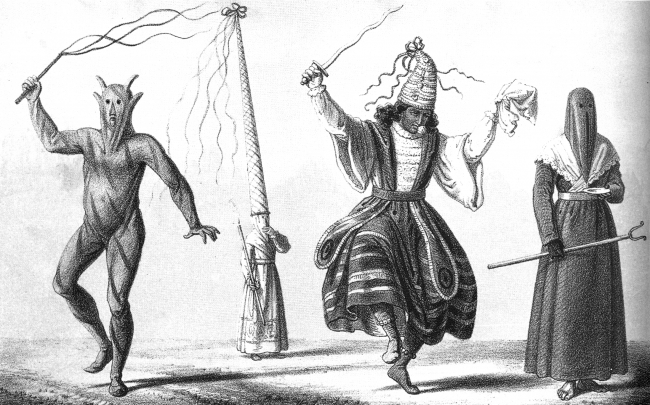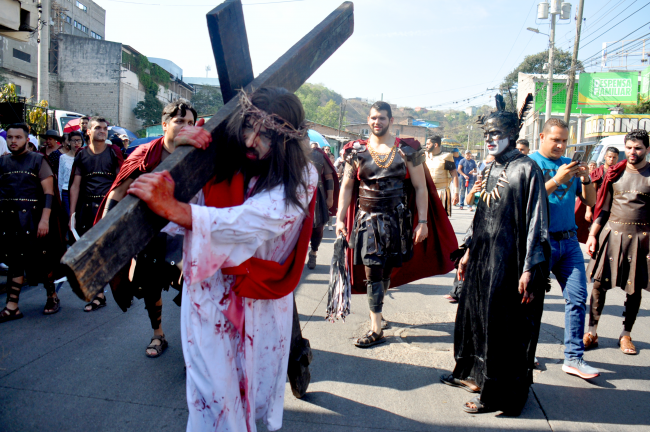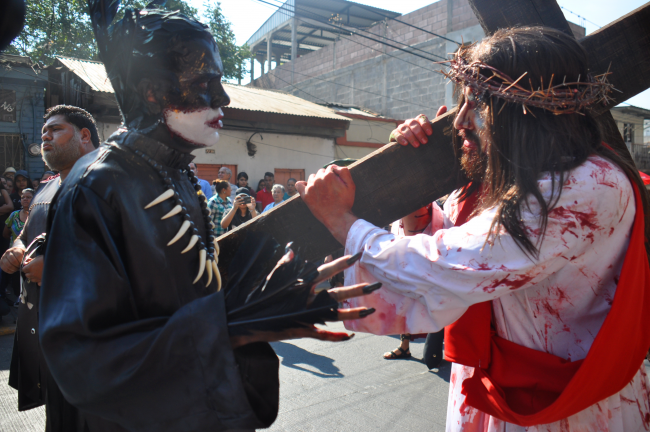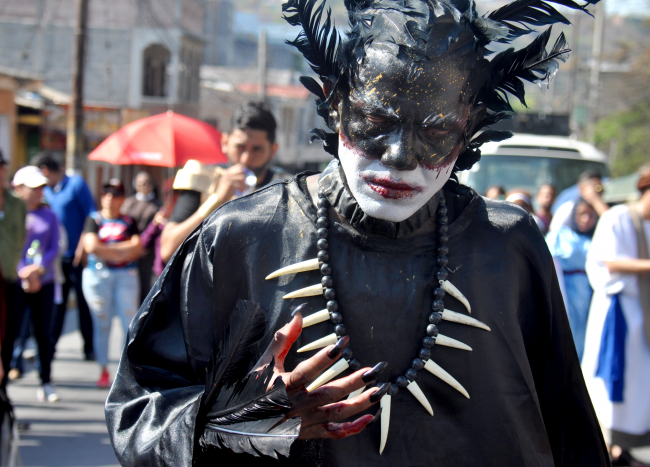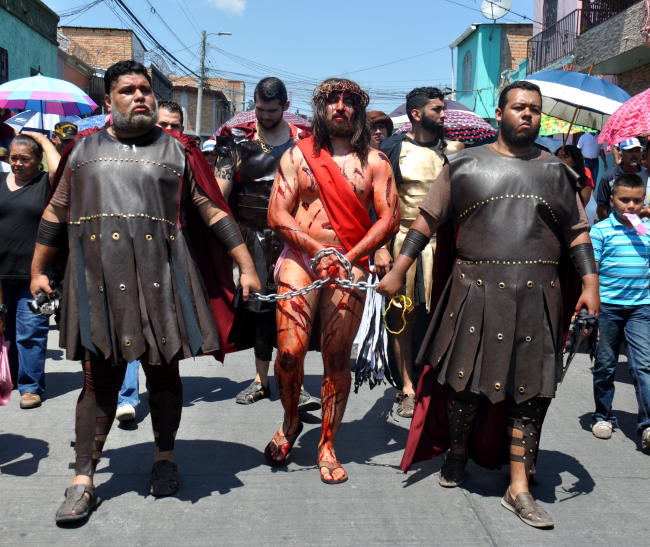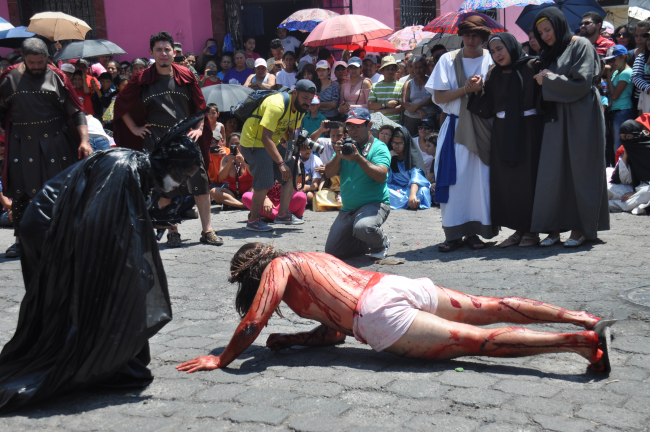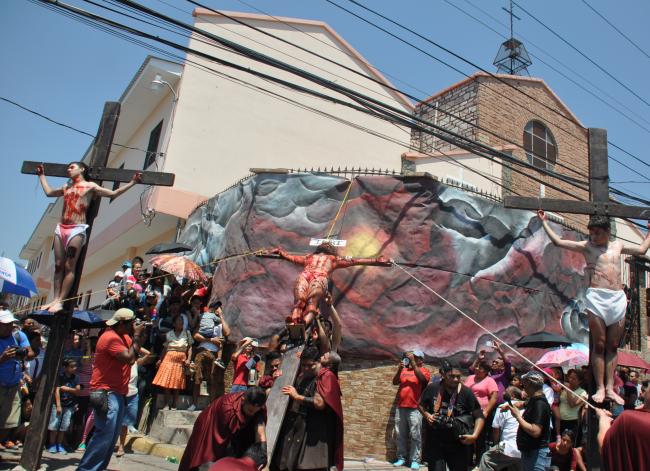On August 14, 1502, when the navigator Crstiobal Colon disembarked on the north coast of Honduras, he began a period of conquest followed by an austere colonization. In the colonization; the traditions of the natives were transformed, new ways of life were imposed. The colonizer also introduced his own artistic forms creating what is known as ''colonial art''. In the province of Hibueras belonging to the Captaincy General of Guatemala, the colonial art was quite reduced due to political problems (conflicts arise over the command of the governorship) until the seminary school was created in Comayagua Tridentino in the seventeenth century where they began an artistic education and organized some theatrical performances, one of them was ''letters of gold''. The towns of American origin had ceremonies that included dances, theater, music and poetry, this inheritance was used for colonization purposes.
The Theatre was used as a means of evangelization, the first theatrical representation performed in our land was ''el diablo cojuelo'' a play by the playwright Luis Velez de Guevara. Also the friars and priests bring from Spain to our province the so-called ''dances of Moors and Christians'' theatrical dialogues accompanied by music and dance. These dialogues taught the Christian religion and the Spanish language. Among other artistic works we find the drama of San Sebastian or diabolic dances in comayagua and the dance of the turas in Trujillo. The artistic performances took place in the open air, there were no artistic venues only the coliseum called ''de comato'' located in Guatemala. At the end of the eighteenth century, and beginning of the nineteenth century volatinos, performers and jugglers came to the province.
The liberal ideas of fashion in Europe in the eighteenth century, influence so that in Central America some sectors dissatisfied by the unequal relations between governors and governed decided to raise the separation of these provinces from the Kingdom of Spain, an act that is reflected in the wording for convenience of the Act of Independence of September 15, 1821, but formal independence is given until July 1, 1823 date that no one remembers, neither commemorates, nor celebrates.
On August 14, 1502, when the navigator Crstiobal Colon disembarked on the north coast of Honduras, he began a period of conquest followed by an austere colonization. In the colonization; the traditions of the natives were transformed, new ways of life were imposed. The colonizer also introduced his own artistic forms creating what is known as ''colonial art''. In the province of Hibueras belonging to the Captaincy General of Guatemala, the colonial art was quite reduced due to political problems (conflicts arise over the command of the governorship) until the seminary school was created in Comayagua Tridentino in the seventeenth century where they began an artistic education and organized some theatrical performances, one of them was ''letters of gold''. The towns of American origin had ceremonies that included dances, theater, music and poetry, this inheritance was used for colonization purposes.
The Theatre was used as a means of evangelization, the first theatrical representation performed in our land was ''el diablo cojuelo'' a play by the playwright Luis Velez de Guevara. Also the friars and priests bring from Spain to our province the so-called ''dances of Moors and Christians'' theatrical dialogues accompanied by music and dance. These dialogues taught the Christian religion and the Spanish language. Among other artistic works we find the drama of San Sebastian or diabolic dances in Comayagua and the dance of the turas in Trujillo. The artistic performances took place in the open air, there were no artistic venues only the coliseum called ''de Comato'' located in Guatemala. At the end of the eighteenth century, and beginning of the nineteenth century came to the province volatinos, jugglers and jugglers.
The liberal ideas of fashion in Europe in the eighteenth century, influence so that in Central America some sectors dissatisfied by the unequal relations between governors and governed decided to raise the separation of these provinces from the Kingdom of Spain, an act that is reflected in the wording for convenience of the Act of Independence of September 15, 1821, but formal independence is given until July 1, 1823 date that no one remembers, neither commemorates, nor celebrates.
